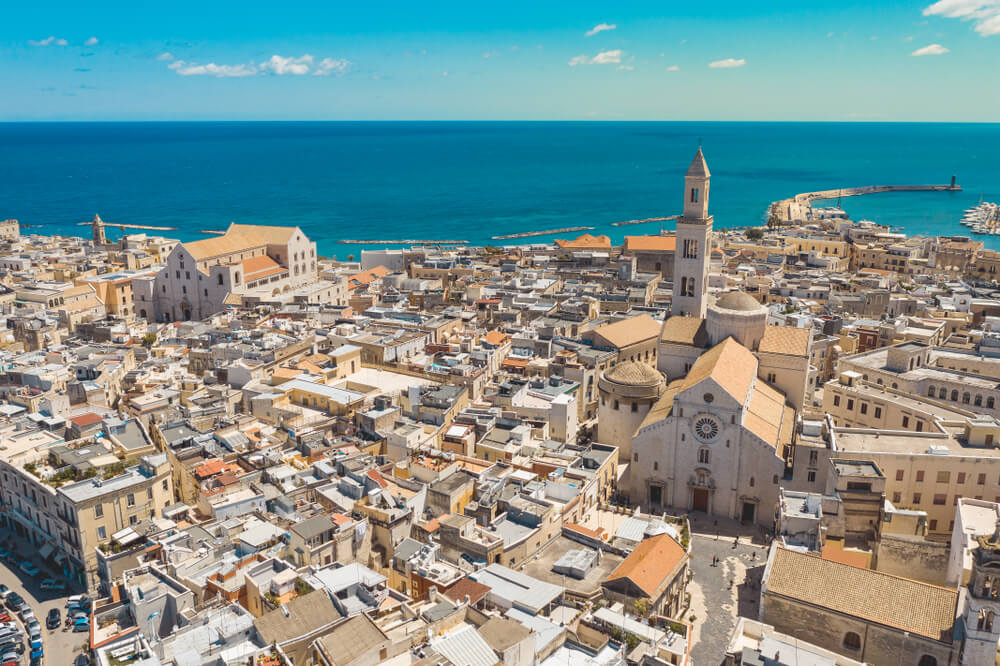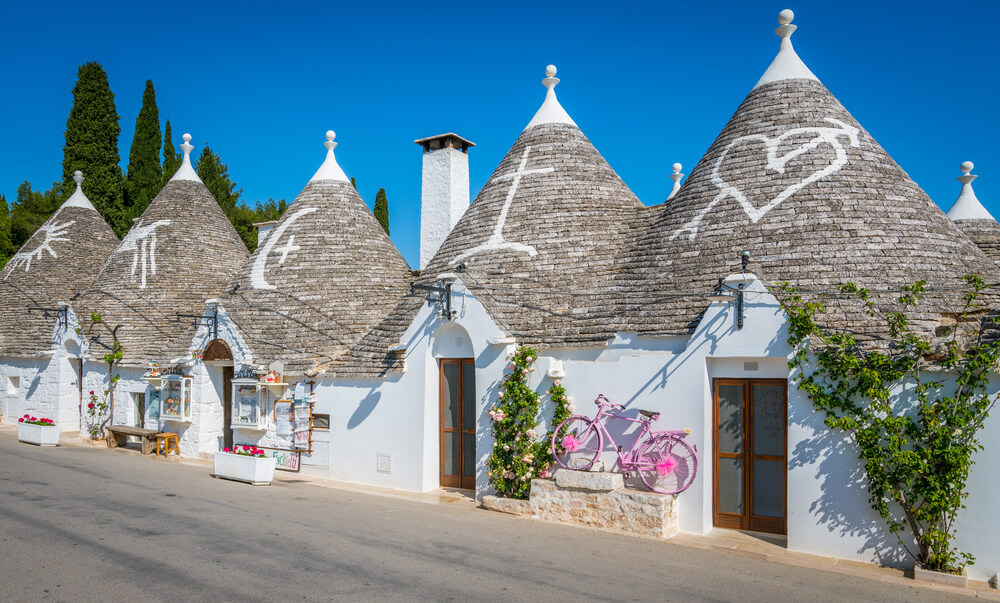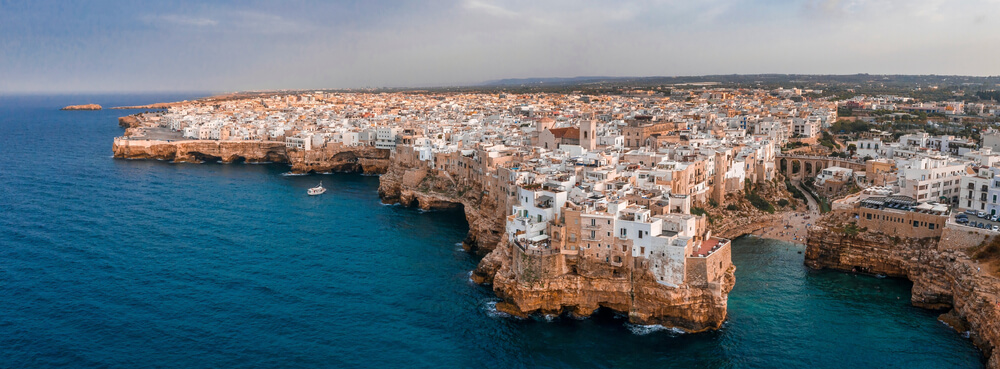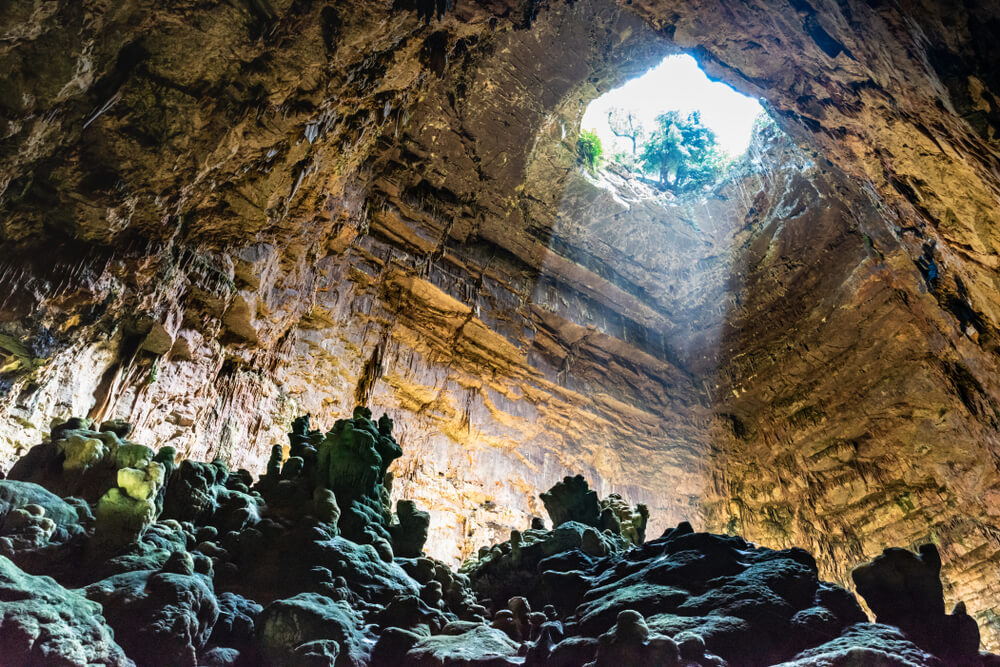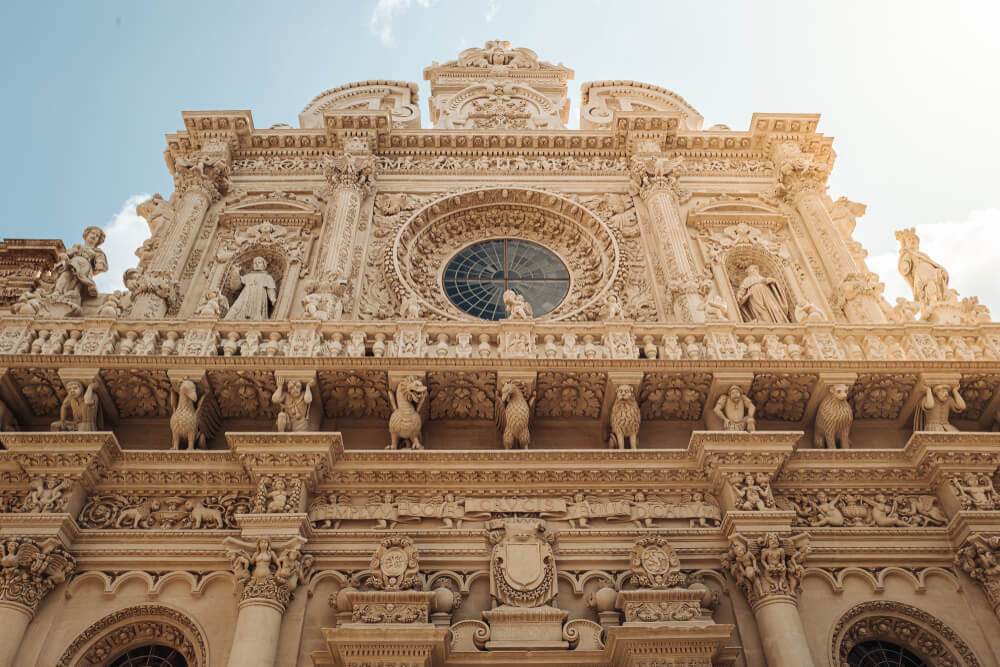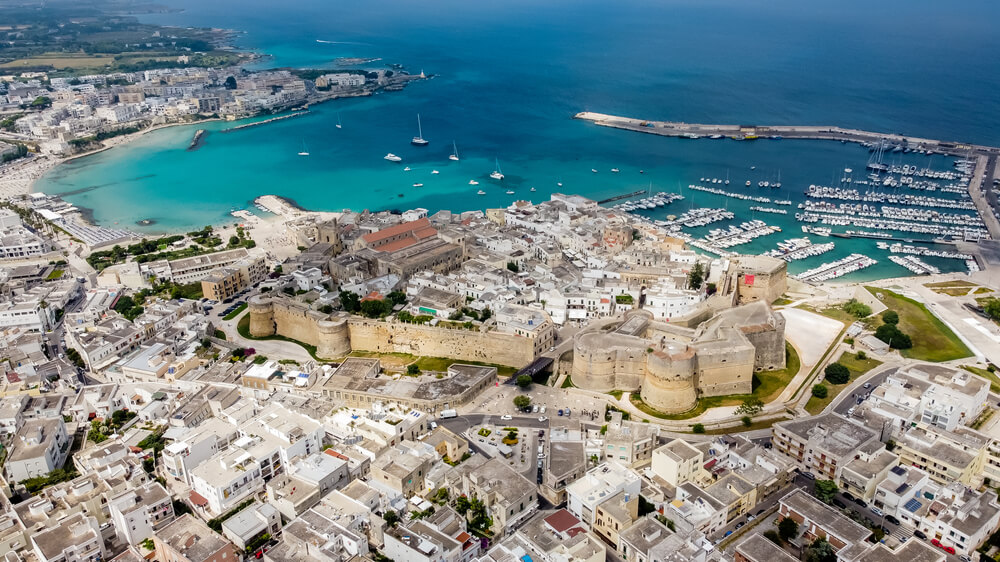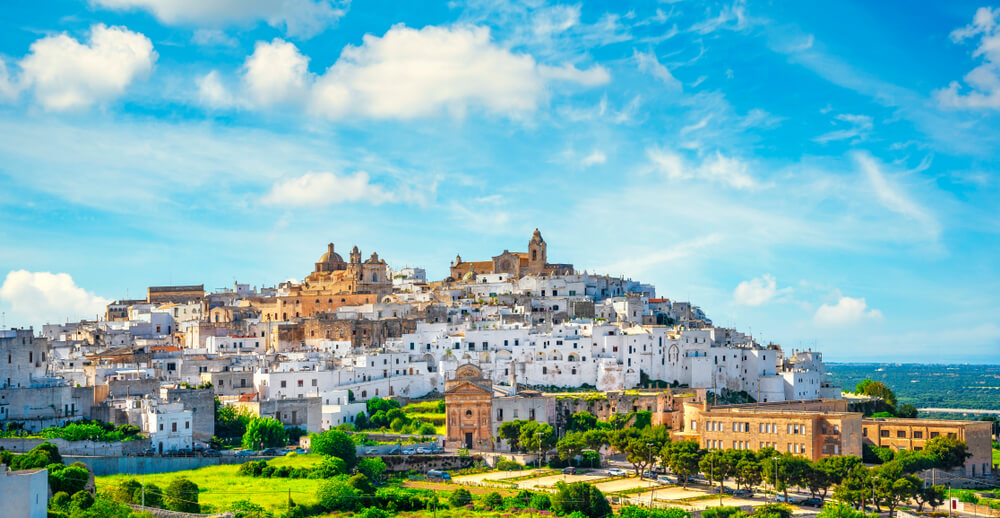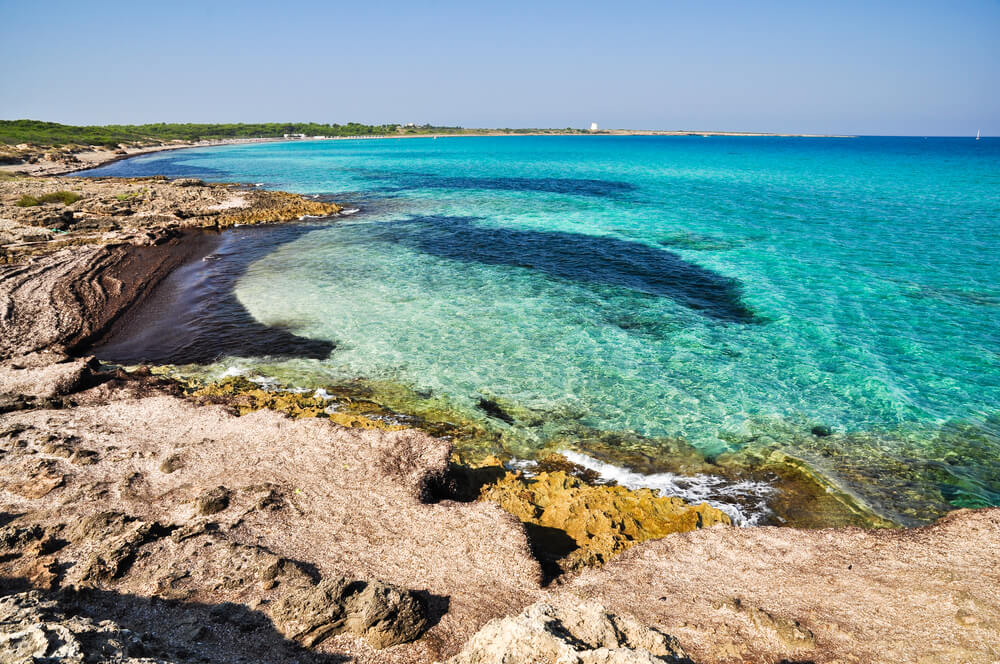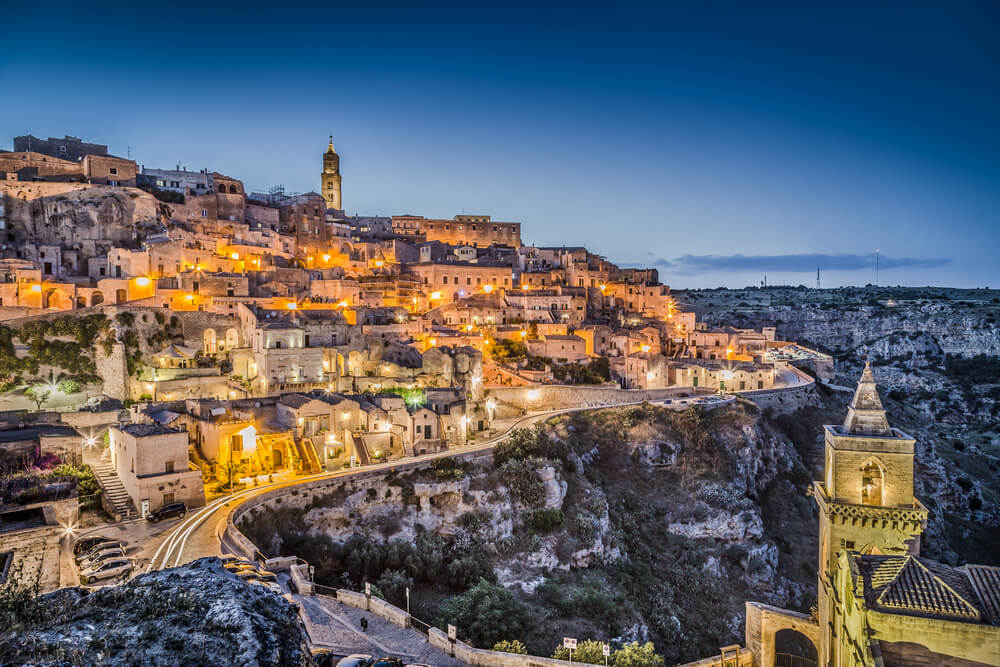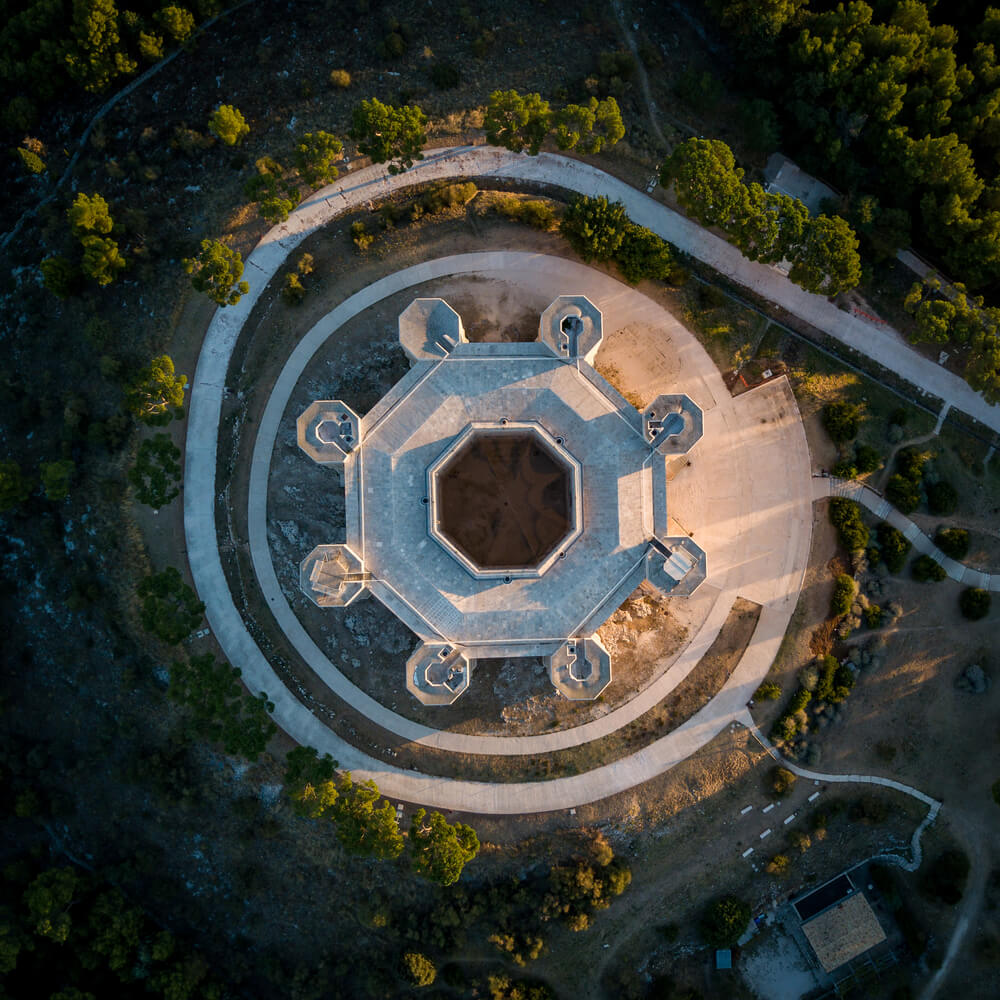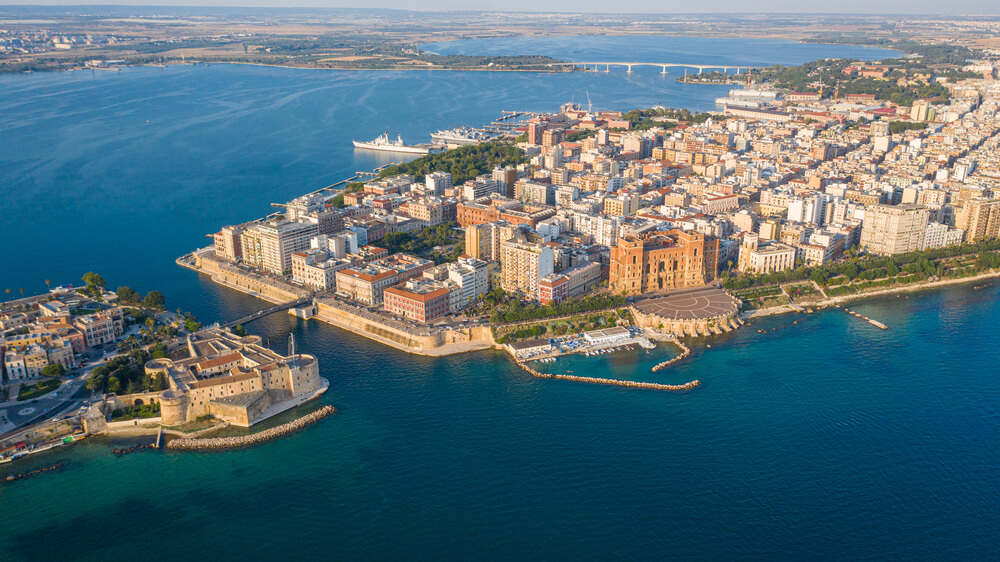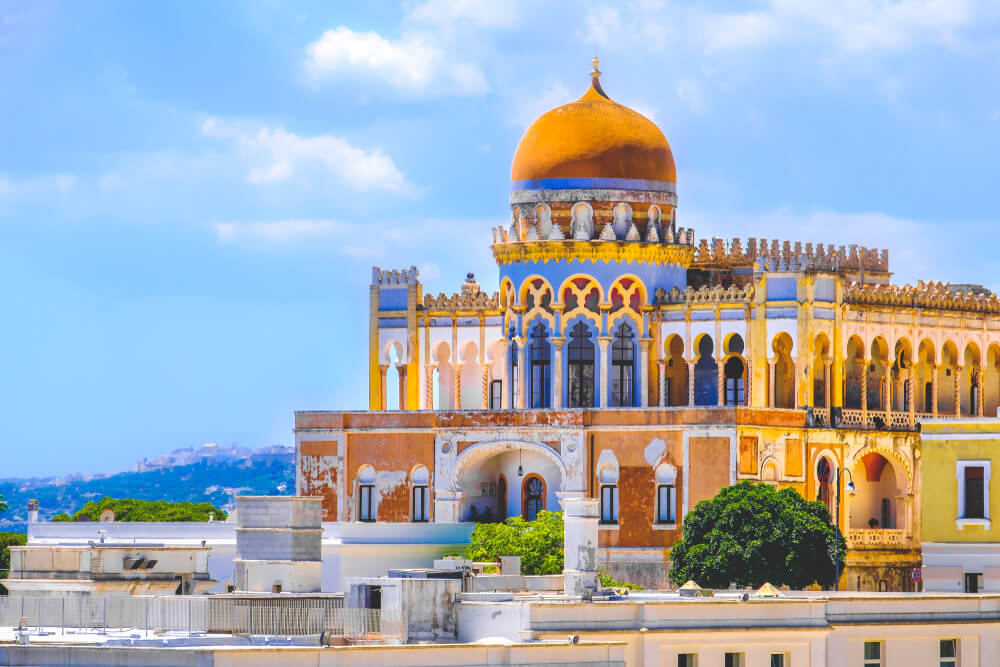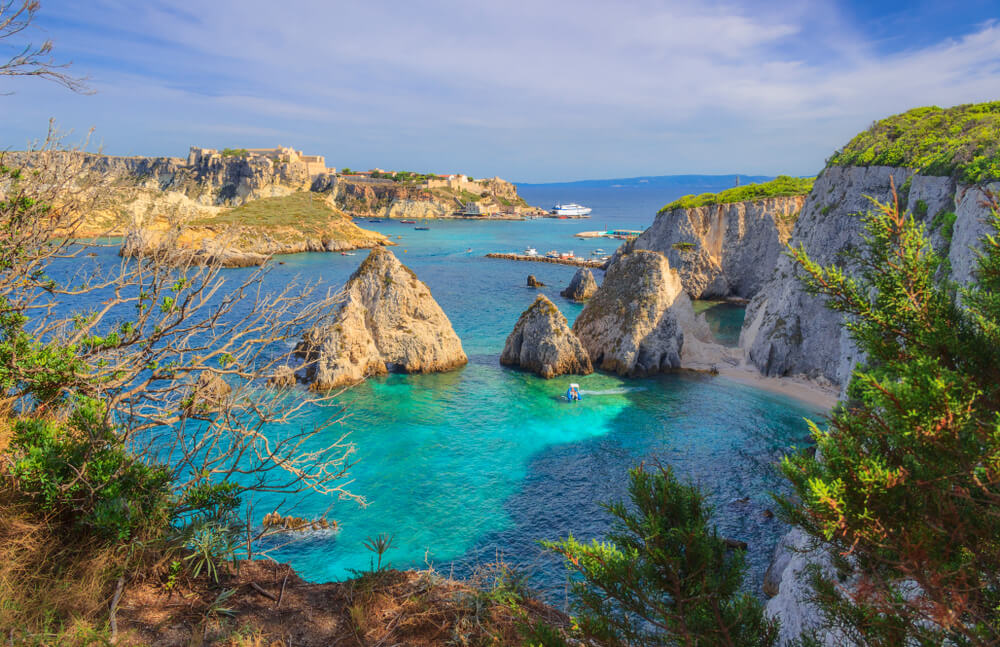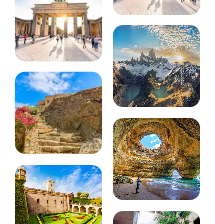Discovering Puglia: The 15 must-sees
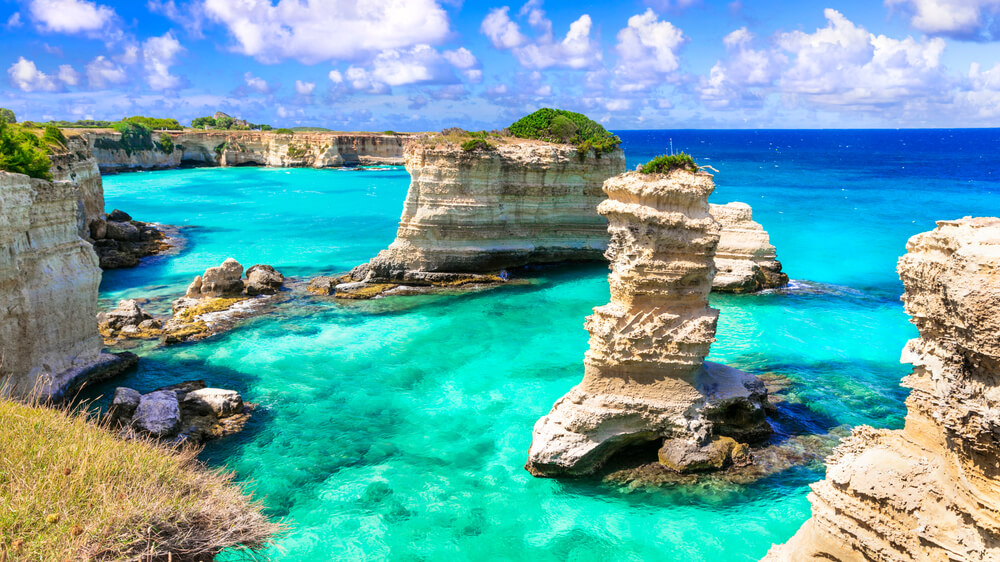
Puglia is the heel of the Italian boot, stretching into the Adriatic and the Ionian Sea to offer you dream beaches with translucent waters! Puglia has kept the secret of its magnificent nature, covered with olive groves, Mediterranean pine forests, giant sand dunes and dazzling white limestone cliffs.
But Puglia also holds the promise of fascinating discoveries! There are, of course, the famous trulli, the white stone houses with cone-shaped roofs that make the headlines in travel magazines, but that’s not all! You’ll also discover mysterious castles, splendid Baroque cathedrals, rock churches and many other treasures.
The far south-east is the perfect region for a week’s road trip in Italy! So let’s get started!
What absolutely must you do in Puglia?
1. Bari
Bari may ring a bell if you’re a cruising enthusiast. The capital of Puglia is a bustling port city that has been a centre of trade and commerce for centuries. This is often where you start your journey. This is your chance to make your first introduction to the region, taking the pulse of the city and savouring its age-old cultural mix.
Mingle with the crowds, try your hand at making pasta, immerse yourself in the local gastronomy and take the opportunity to take your first steps in Italian!
In terms of sightseeing, Bari’s historic centre is well worth a visit, if only to see the Basilica di San Nicola and its strange triangular façade…
What to do in Bari
- Eat Orecchiette
- Get lost in the historic centre of Bari Vecchia
- See the relics of Saint Nicholas in the basilica
- Applaud the artists at the incredible Teatro Petruzzelli
- Visit the Swabian Castle, the largest fortress in the region
- Visit the Corrado Giaquinto provincial art gallery
2. Alberobello, a UNESCO World Heritage Site
Alberobello, with its lilting name, is the emblematic image of Puglia. It’s what you wanted to see when you left, so make the most of it! This unique village, nestling in the olive-tree-dotted Itria Valley, is considered one of the most beautiful in Italy and is a UNESCO World Heritage Site.
Here’s a quick look at the famous Trulli:
Historically, their construction is thought to be linked to the Count of Conversano, who in 1635 built a lordly villa around which the trulli clustered. As he wanted to create an area independent of the County of Naples, which imposed a tax on buildings, he authorised settlers to work the land in the free zone and settle there! On condition that their dwellings could be easily dismantled, which meant that they would not be considered stable and therefore not liable for housing tax.
You’ll notice that we’re always more ingenious when it comes to avoiding paying anything!
These small circular houses are built from stone with no mortar to weld them together and covered in lime. They are often decorated with a mysterious, magical, primitive or religious symbol, supposed to protect the families.
It was not until the 18th century that Alberobello was recognised as a village.
How to visit Alberobello
Beware, you are entering one of the most touristy areas of the region. If you can come out of season, do so, and if not, try to make the most of the morning.
The village now has 1600 trulli (trullo in the singular) divided into two districts:
- The Monti district: This is THE most popular tourist spot. Most of the trulli here have been converted for tourism. From souvenir shops and craft workshops to restaurants and bed & breakfasts, you can visit the inside and even enjoy the unusual experience of sleeping in a trullo!
- The Aia Piccola district: If you’re looking for a little more authenticity, and prefer to avoid mass tourism, the Aia Piccola district is the place to go. Some of the Trulli are still inhabited!
3. Polignano a Mare
You’ve heard of the song Volare oh oh, Cantare oh oh oh oh , well you should know that its performer, Domenico Modugno (and not the King gypsies) hails from Polignano a Mare! So don’t forget to listen to the soundtrack during your visit.
You’ll easily understand why he talks about this blue painted blue (Nel blu dipinto di blu) when you see the colour of the water and the sky!
Polignano a Mare is certainly one of the most beautiful places to visit in Puglia. The town nicknamed “the pearl of the Adriatic” boasts a coastline jagged by turquoise waters and limestone cliffs with sparkling white houses perched on top.
What to do in Polignano a Mare
- Take a boat trip to visit the fascinating sea caves of Polignano a Mare
- Stand-up paddle along the cliffs
- Visit the picturesque Abbey of San Vito
- Take a dip in the clear water of the famous Lama Monachile beach
4. The Castellana Caves
The Castellana caves are the most impressive group of natural caves in Italy!
Discovered in 1938, they are 3 km long and 70 metres deep! They have quickly become one of Puglia’s leading tourist attractions and are among the most interesting caves in Europe.
Guided tours are available to discover the incredible landscapes formed by the vaults filled with stalactites and stalagmites. A striking discovery in the heart of the bowels of the Earth.
How to visit the Castellana caves?
- The short itinerary: lasting around 1 hour, gives you a first impression of the 1 km site, with a visit to the spectacular black cave, named after the mushroom that covers its walls.
- The long route: lasting around 2 hours, covers the entire underground network and takes you all the way to the white cave, considered by the locals to be the most beautiful cave in the world!
- Spéléonight: for budding cavers who want to experience the tour in a different way, here you’ll be guided by experts and equipped only with your helmet and a headlamp for an underground exploration in the dark!
- Hell in the Cave: Think big! Why not attend the fantastic show featuring Dante’s Inferno in a breathtaking setting!
5. Lecce
The southernmost part of Puglia isn’t just known for its heavenly beaches. At the heart of the Salento peninsula lies the sublime city of Lecce. It is the perfect representation of Italian Baroque and is often referred to as “little Florence”.
Less well known than its big sisters to the north, it is nevertheless a major surprise and will leave you dreaming…
Its historic centre and cobbled streets are full of picturesque squares, churches with elaborate facades, Roman sites, palaces, museums and craft shops. The harmony that reigns here is underlined by the use of “Lecce stone”, which unites most of the buildings in a highly elegant colour code.
What can you visit in Lecce?
- The Roman amphitheatre in Piazza Sant Oronzo
- Piazza del Duomo, flanked by the cathedral (il Duomo), the Campanile (70 metres high!), the Diocesan Museum and the Episcopal Palace
- The church of Santa Croce and its incredible sculpted façade!
- The MUST (MUseo STorico), aptly named to indicate that it is a must-see.
- The ancient fortified gates that open onto the historic centre, all of them monumental.
6. Otranto
Continuing southwards, you arrive in the beautiful fortified town of Otranto.
This city of immense heritage proudly bears the traces of the dominations that have successively possessed it. From its earliest occupants dating back to prehistoric times, to the era of Magna Graecia in Antiquity, and then to Byzantine, Norman, Angevin, Aragonese and Turkish occupations, Otranto has always been highly coveted.
Its historic centre, protected by walls whose foundations date back to the Messapian era, eight centuries BC, conceals masterpieces fashioned by the various peoples who have inhabited it. A seaside town to discover without delay!
What to do in Otranto :
- Visit the Aragonese castle built in the 15th century
- Enter Otranto Cathedral, where the 800 skulls of the martyrs who refused to convert to Islam when the city was taken by the Turks in 1480 are preserved.
- Admire the incredible medieval mosaic floor depicting a tree of life, created by the monk Pantaleone in the cathedral
- Discover the works in the Diocesan Museum
- Admire the frescoes in the Byzantine church of the Chiesa di San Pietro
- Enjoy the sublime beaches
- Feast on seafood specialities in one of its many restaurants
- Take in the sights at the Bauxite Quarry a few kilometres from Otranto
7. Ostuni, the white city
Perched on a hilltop, Puglia’s famous white city is obviously on the list of things not to miss during your stay!
In the Middle Ages, it was customary to cover the walls with white lime to brighten up the narrow village streets. Today, the result is towns with an incredible charm that’s great fun to visit!
The historic centre is not very large, so don’t hesitate to get lost until you reach the highest point of the town, where you can enjoy a breathtaking panorama of olive groves as far as the eye can see.
Don’t miss Ostuni :
- Ostuni’s 15th-century cathedral, with its surprising stone rose window.
- The sixteenth-century Palazzo Vescovile, which houses the diocesan museum.
- Piazza della Liberta, framed by the Palazzo Municipale, the medieval church of St Francis of Assisi and the Column of Sant’Oronzo
- The Museum of Pre-Classical Civilisations of the Murgia Méridionale (warning: explanations only in Italian): you’ll be moved by the famous skeleton of a young woman in labour, and her baby’s foetus dating back more than 25,000 years!
- Explore the Torre Guaceto nature reserve and protected marine area, 30 minutes from Ostuni. Coves, dunes, wild flora and fauna, everything we love!
8. Gallipoli
Gallipoli is another must-see on your Apulia road trip!
Built in two parts, with a fortified historic centre built on a rocky islet and linked to the new town by a stone bridge, Gallipoli boasts a fine religious heritage with its many seventeenth- and eighteenth-century churches.
This pretty town is also renowned for being the gateway to some of the most beautiful beaches in the region, known as the “Maldives of Puglia”. That gives you an idea of the colour of the water!
Don’t miss Gallipoli :
- Its fortress castle founded by the House of Anjou and remodelled by the Spanish
- The remains of the Greek fountain
- The 17th-century baroque cathedral of Saint Agatha
- The beaches! Don’t hesitate to head for the Punta Pizzo regional nature park, where you’ll find some of the most heavenly beaches, including Punta della Suina.
9. Nardo and the Porto Selvaggio reserve
A visit to the discreet Baroque town of Nardo is a chance to discover a Baroque nugget that is less touristy than Lecce. Its narrow streets are dotted with churches, squares and historic cafés where you can stop and savour a little of Italy’s famous Dolce Vita.
And to make matters worse, Nardo is the perfect stop-off point for enjoying the seaside resorts of Santa Caterina and discovering the marvellous nature reserve of Porto Selvaggio. The park, which covers more than 1,100 hectares, follows the coast for 7 km, offering just as many walks, swimming opportunities and panoramic views of the Ionian Sea!
Things to do in Nardo :
- Piazza Salendra, one of the most beautiful Baroque squares in Puglia, with its beautiful cathedral
- Church of San Domenico with its richly decorated façade
- Chiesa del Carmine church with its beautiful Renaissance portal
- The Temple of Osanna
- The Porto Selvaggio reserve, with its three defence towers and caves, including the beautiful Grotta del Cavallo and the underwater Grotta delle Corvine
10. Gargano National Park, the spur of Italy
Anyone who has ever looked at a map of Italy will have seen a perfectly shaped boot. The resemblance goes even further, as you’ll notice that the boot also has its own spur! For those in doubt, the spur is an instrument used by horsemen and worn on their boots to make the action of their legs more precise. In a nutshell.
It’s in the spur of Italy that we propose to stop now, in the most northerly part of Puglia.
Sinking into the Adriatic Sea and facing Dubrovnik, the Gargano National Park is a place not to be missed if you love nature and hiking! This tip of the Foccia region is famous for its mountain range, lush greenery and wild coves.
Visiting Gargano, what to do and what to see?
- Visit the pretty towns of Vieste and Vico del Gargano
- Try out all the beaches around Peschici and find your favourite
- Climb up to the hilltop village of Mont’Angelo and admire the view over the park from its 800-metre altitude
- Take a boat trip on Lake Varano and watch the birds
- Hiking in the Umbra forest, a protected area renowned for the incredible richness of its flora and fauna. Between April and the end of May, you can discover the 85 species of wild Gargano orchids! Botanists from all over the world flock here; it’s the place on earth with the most varieties, so don’t hesitate!
- Explore the town of Manfredonia and visit its magnificent Swabian-Angel castle, now home to the archaeological museum. Here you will see tombstones dating back to the 6th century BC.
11. Matera
So, technically, if you really want to quibble, some would say that the incredible town of Matera is not in Puglia. Geographically speaking, that’s true. But borders are as thin as they are imaginary and you CANNOT miss Matera during your stay in Puglia!
You may even have seen it in the cinema without knowing it! Matera was the setting for Mel Gibson’s Passion of the Christ, Ben Hur, Wonder Woman and the latest James Bond film, Dying Can Wait.
You’ll know Matera for its unusual Sassis dwellings, a UNESCO World Heritage site that represents the most remarkable group of troglodyte dwellings in the Mediterranean basin.
A little history to understand
The Sassis of Matera are caves shaped over the centuries by the river that flows at the bottom of the ravine below. Occupied since Palaeolithic times, the Sassis are evidence of continuous human occupation over several millennia!
Over time, the caves were gradually transformed into real houses, with the inhabitants digging into the crumbly rock to fit them out, eventually forming a village.
In the 7th and 8th centuries, Byzantine monks took refuge in the caves, and some of them were transformed into rock churches of inestimable heritage value.
Unfortunately, by the 1950s, the Sassis had become nothing more than a huge shanty town where the poorest families had taken refuge in search of shelter. Conditions became so unhealthy that the government organised a major rehousing plan and evacuated the Sassis, which fell into oblivion until the 1980s, when the site was finally restored and recognised for its incredible historical value. Today, there are more than 3,000 Sassis in Matera, most of which have been transformed into tourist attractions.
What can you see in Matera?
- The Romanesque cathedral and its beautiful fresco of the Last Judgement
- The church of San Pietro Caveoso, built into the side of a cliff! Vertiginous!
- The rock church of the Madonna de Idris, with its splendid view over the city
- The unfinished castle of Tramontano (crazy story here!). The people of Matera hated the Count of Tramontano, who taxed them to death. When he started building a castle to control his lands, the citizens organised themselves and murdered the Count as he left the cathedral! And the castle was never finished).
- The National Archaeological Museum, where you can learn more about the past of this fascinating region
- the Parco della Murgia Materana, located on the other side of the Matera ravine and just a 10-minute drive away, the park offers great walks and, above all, THE view of the whole of the Sassis from the Murgia Timone belvedere.
12. Castel del Monte
If there’s one strange visit to Puglia, it’s Castel del Monte, Italy’s most mysterious castle! Built in the 13th century by the Holy Roman Emperor Frederick II. He was known for being multilingual and open-minded.
In 1996, Castel del Monte was added to UNESCO’s list of World Heritage Sites, both for its architectural value, built around the number 8, and for the wave of mystery that surrounds it.
The castle stands 540 metres above sea level, on top of a hill (hence the name) overlooking the Western Murges mountain range. It has no moat or drawbridge, so it may never have had a defensive role. In any case, it’s not every day you get to see a perfectly shaped octagonal castle, with an octagonal tower at each corner!
Why so much mystery?
- We don’t know what it was used for: a castle that isn’t used to defend anything is unsettling. Some say it was a mysterious temple, while others suggest it was a wellness centre inspired by Arab hammams. Indeed, the building contains numerous cisterns and ingenious pipe systems.
- The magic of 8, the number of infinity: the octagon is a highly symbolic geometric shape! It is the intermediary between the square (symbol of the earth) and the circle (symbol of the sky and infinity) and symbolises the passage from one to the other.
- Powerful astrological symbols! As in many temples of ancient civilisations, the stones play with the sun, which casts special shadows. At the equinoxes, the shadow draws a rectangle whose proportions correspond to the golden ratio.
- The well of science: Inside the courtyard, surrounded by high walls, you feel as if you’re in a well, which, in medieval tradition, symbolises knowledge.
13. Taranto
Legend has it that Taranto was founded by its eponymous hero, Taras. Taras was the son of Poseidon and Satyrion, a nymph daughter of Minos, then King of Crete. When Taras was shipwrecked, his father, the god of the seas, sent a dolphin to rescue him. He crossed the Ionian Sea and reached southern Italy. Once on land, he founded Taranto, named in his honour.
Legend aside, the city of Taranto has very ancient foundations. It was a Greek colony founded by Spartan exiles in 706 BC!
As you can imagine, a lot has happened in Taranto since then. So don’t miss out on a visit!
What to do in Taranto
- The Aragonese castle is the town’s landmark. It was built in the 15th century on the ruins of ancient Byzantine foundations.
- San Cataldo cathedral, home to the relics of the city’s patron saint (and its superb mosaic floor)
- The National Archaeological Museum, with its huge collection of Greek, Roman and Apulian artefacts (originally from Puglia)
- The underground city, with a fascinating guided tour of the catacombs of the old town
- The Doric Temple of Poseidon (almost nothing remains of it, but still!)
- Palaces such as Palazzo Beaumont and Palazzo Pantaleo
- The Jonian Dolphin Conservation Centre, which fights to protect the environment. You can board a catamaran and go dolphin watching in the Ionian Sea!
- The Cheradi Islands, a small archipelago in the Gulf of Taranto whose best-known island is Isola di San Pietro, offer splendid unspoilt beaches on a day trip.
14. Santa Cesarea Terme
In the south of the Salento peninsula lies the spa town of Santa Cesarea Terme. Tourists flock here in summer, so make the most of its thermal waters and its beautiful nineteenth-century villas on the shores of the Adriatic Sea.
One in particular catches the eye. This is the famous Villa Sticchi, with its original Moorish architecture. Villa Raffaella, built in the 14th century for an Italian baroness, is also well worth a visit.
Things to do in Santa Cesarea Terme :
- Take a relaxing bath in the 4 sea grottoes filled with hot water!
- Stroll along the Santa Cesaera Terme promenade, lined with shops, cafés and restaurants.
- Visit the town’s museum, housed in a former convent
- Admire the Raffaella and Sticchi villas
- Visit the ancient towers (Torre Santa Cesarea and Torre Miggiano) that once protected Salento from enemy ships
15. The Tremiti Islands
The Tremiti Islands may be part of the Gargano National Park mentioned above, but they deserve their own paragraph!
In ancient times they were known as the Diomede Islands. Their current name is thought to come from “Trimerus”, meaning “in three parts”, or from the Latin “Termes”, meaning “olive groves”, which makes perfect sense. A darker part of their history also earned them the name ‘Colonia Penale’, when Mussolini deported suspected homosexuals during Italy’s Fascist period.
This little paradise of just 3 km² is divided into 3 main islands and a few uninhabited rocks.
The islands :
- San Domino: This is the largest of the three and the one dedicated to the world of tourism. This is where you’ll find the only sandy beach, “Cala delle Arene”.
- San Nicola: Home to the majority of the population and the historical and administrative centre of the islands.
- Capraia: the second largest island in the archipelago, but uninhabited
What to see and do :
- Limestone cliffs, caves and coves
- The immense pine forest planted by the priests of San Domino (1 tree for 1 sin)
- Take a boat trip to discover the sea caves
- Listen to the album by Italian singer Lucio Dalla, written in the Tremiti Islands
- Visit the fortified abbey on the island of San Nicola, built by the monks in the 9th century to protect themselves from enemies
Practical info :
- Allow 1? hours by ferry from Termoli
- In summer, other towns offer links with the islands: Peshici, Vietse, Manfredonia, Rodi Garganico, etc.
- The islands are generally visited by the day, but it is possible to sleep in the few hotels on San Domino.
- Wild camping is strictly forbidden
- For a more authentic experience, you can also stay with local people!
Conclusion
You now have all the keys you need to create the perfect Puglia road trip! In one week, ten days or two weeks, this marvellous region will have everything you need to fulfil your expectations and fill your head with wonderful holiday memories!
And don’t forget that the south is authentic Italy with no fuss, so let yourself be taken in by the Italian dolce vita and savour all its flavours and colours!
200 audioguided tours for cities all around the world
Download